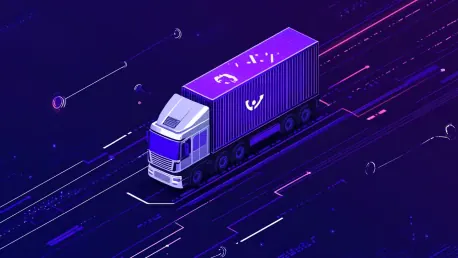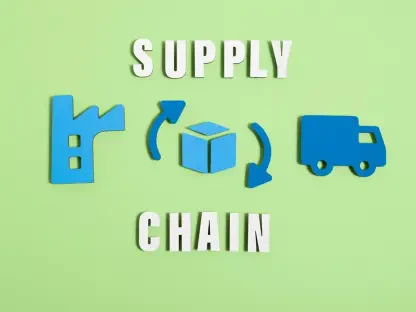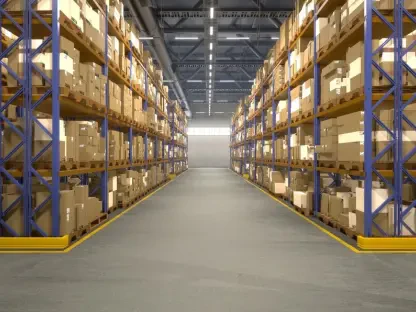In the ever-evolving world of transportation logistics, shippers and carriers face the dual burden of limited resources and the need for constant adaptation. Environmental emergencies, geopolitical changes, and workforce shortages demand agile replanning, pushing stakeholders to find innovative solutions to these perennial issues. The heightened demand for quick and efficient responses in a rapidly changing environment necessitates an in-depth examination of how technology can be leveraged to enhance supply chain operations.
Continuous Supply Chain Pressures
The State of Uncertainty
Logistics professionals must navigate an environment fraught with unpredictability. Whether dealing with political instability, natural disasters, strikes, or staffing problems, quick adaptation is essential. These disruptions lead to complex challenges, primarily centered around the need for rapid data sharing to manage processes effectively. The ability to seamlessly adapt to unexpected changes can distinguish between a resilient supply chain and one that struggles to meet demands, emphasizing the critical nature of foresight and agility in logistics management.
Cost and Complexity Impacts
The necessity of showcasing data across multiple transportation modes and time zones raises operational costs and complicates supply chain management. This constant pressure highlights the inefficiencies inherent in fragmented systems, wasting valuable resources and time. As logistics operations span continents and involve a multitude of stakeholders, the coordination and timely flow of information become paramount. The increased cost implications further underline the need for integrated systems that can streamline operations and reduce redundancies, facilitating smoother and more economical logistics processes.
Fragmentation Issues and Solutions
The Fragmentation Challenge
A critical hindrance in today’s logistics landscape is the fragmentation of systems and networks. This disjointed structure hampers transparency and prevents efficiency gains, as the proliferation of isolated solutions results in data complexity that is difficult to integrate and analyze cohesively. The reliance on disparate systems impedes a united approach to data management, leading to potential blind spots and inefficiencies. This fragmentation further complicates decision-making processes, as accurate and timely information is essential for managing logistics operations effectively.
Cloud Platform Adoption
The introduction of cloud-based transportation management platforms is transformative, offering a unifying solution. These platforms facilitate seamless connectivity among shippers, carriers, forwarders, and retailers by standardizing and centralizing data, thereby providing real-time visibility of shipments across various transportation modes. Adoption of these cloud platforms allows for more coordinated and transparent operations, enabling stakeholders to make informed decisions swiftly. The integration of various data sources into a single, cohesive system ensures that all parties have access to accurate, up-to-date information, thus minimizing the risks associated with fragmented data.
Enhancing Interoperability at Dock and Yard
Dock and Yard Management Improvements
The integration of advanced dock and yard management tools represents a significant leap forward. These tools predict load arrival times with greater accuracy, benefiting from AI’s ability to uncover hidden patterns within data, such as the impact of strikes or traffic jams. Improved interoperability at these key logistical points leads to more efficient loading and unloading processes, reduces delays, and optimizes scheduling. The accuracy and predictive capabilities of AI-driven management tools can significantly reduce the uncertainties and inefficiencies that have long plagued dock and yard operations.
Case Study: LKW WALTER
A notable example is the European logistics provider LKW WALTER, which manages thousands of shipments daily. By adopting a smart dock and yard management tool, they have streamlined routing and planning processes, reduced waiting times, and improved overall efficiency. This technology allows drivers to plan their routes more effectively by anticipating potential delays and optimizing waiting periods. The real-time collaboration between warehouses and drivers facilitated by these tools ensures a more dynamic and responsive logistics operation, contributing to enhanced efficiency and reduced operational bottlenecks.
AI and Machine Learning Integration
Resource Optimization
AI and machine learning play pivotal roles in enhancing logistics operations. These technologies provide real-time insights, helping companies spot inefficiencies, optimize resources, and reduce environmental impact. AI can assist with route planning and eco-friendly driving practices, ultimately minimizing empty miles and reducing emissions. The application of AI in resource management ensures that every aspect of logistics operations is as efficient and sustainable as possible. By analyzing data trends and operational patterns, AI can identify areas for improvement that might otherwise go unnoticed, securing long-term gains in efficiency and sustainability.
Procurement and Quotation Automation
AI and machine learning are also revolutionizing procurement and quotation processes. Automation of tasks such as research and offer creation leads to more efficient and accurate spot truck transportation pricing, tailored to specific business parameters and continuously refined for improved accuracy. These technologies streamline the procurement process, allowing companies to respond more swiftly and accurately to market changes. Automated quotation tools reduce the need for extensive manual input, freeing up resources and ensuring that pricing is competitive and aligned with market conditions.
Path to Supply Chain Interoperability
Technical Challenges and Solutions
Achieving interoperability requires overcoming technical challenges, setting standards, and improving data quality. These steps are crucial for ensuring stakeholders can focus on their core functions of transporting goods, thus enhancing customer satisfaction. Establishing universal standards and enhancing the quality of data shared across systems is essential to create a cohesive and efficient supply chain. Overcoming these technical hurdles will allow for more streamlined operations and better coordination among different entities within the logistics landscape.
Industry-Wide Adoption
In the dynamic landscape of transportation and logistics, both shippers and carriers grapple with the dual challenges of constrained resources and the necessity for constant adaptation. They must handle environmental emergencies, geopolitical shifts, and labor shortages, all of which compel them to be agile in their planning and to seek inventive solutions to these ongoing challenges. The increasing need for rapid and efficient responses in this fast-changing environment calls for a focused exploration of how technology can be harnessed to optimize supply chain operations. Leveraging technological advancements is critical for improving overall efficiency, ensuring timely deliveries, and maintaining robust logistical networks. By integrating modern technology, stakeholders can better address disruptions, streamline processes, and enhance overall performance. As such, the role of technology in reshaping the logistics and transportation sector cannot be underestimated. It serves as a foundational element that not only supports current practices but also drives future innovations in supply chain management.









